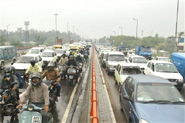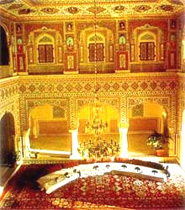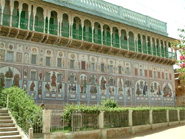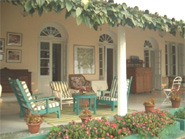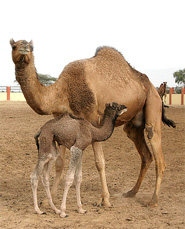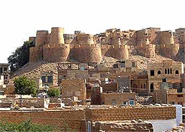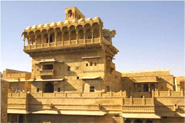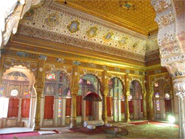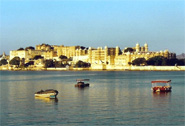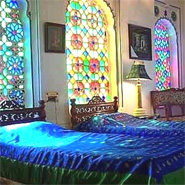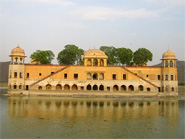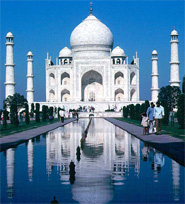|
Check the 18 day tour to Rajasthan's Forts and Palaces :
Durations: 17 Night - 18 Days
Destinations: Delhi - Samode - Mandawa - Gajner - Bikaner - Jaisalmer - Rohet - Udaipur - Deogarh - Jaipur - Bharatpur - Agra - Delhi
Day 1 : Arrive Delhi
Upon arrival you will be met at the airport with garlands. Our executive would escort you to your hotel Imperial . We would have done a pre check in for you at the hotel which saves you time in the middle of the night.
New Delhi :
New Delhi begins with the drive past Safdarjang’s Tomb (1753 AD) on the way to Qutab Minar (1193 AD) this striking medieval tower of victory of Persian World is 73 m high. Within the Qutab complex, amidst the ruins of Quwat-ul-Islam mosque, stands the Iron pillar which has stood the vagaries of weather and has not rusted over 1500 years. Then drive through New Delhi includes the Embassy area (Diplomatic enclave), Government buildings, India Gate, Sikh Temple (Bangla Sahib Gurudwara), Birla Temple and Connaught Place, New Delhi’s main shopping area. Visit Humayun’s Tomb - considered to be the fore runner of Taj Mahal.
Day 2 : Delhi
After a good rest and a leisurely breakfast , we'll take an orientation tour of the city, that s quite a remarkable mixture of the old and new. The very modern metro, which once was the seat of most of the ruling clans of Hindustan. The visit includes the 12th century qutub minar and the vibrant old Delhi. A Welcome dinner at the Village Bistro with cocktails.
Day 3 : Samode
After a restful night and a leisurely breakfast, we head out for the village of Samode for two nights at the beautiful Samode Palace.
Day 4 : Samode
We spend the day exploring the rural life and the comforts of the pristine Samode palace.Tonight we host you a dinner at a special venue to add to the charm of the palace. Samode is quite close to Jaipur and is a perfect place to spend one's holidays. It is a place of great interest for people who appreciate culture and local arts. The village or town is famous for its magnificent havelis, mansions and handicrafts, so for your next holiday travel to Samode and see the rural life and flavors of Rajasthan. The famous Samode Palace belongs to the Rawals of Samode, who do not belong to a royal family but are affluent noblemen. This family was bestowed the title of "Maha Rawal" by the royal family as a reward for their loyalty and courage. The Samode Palace is about four hundred years old and has gone through a lot of restoration work. Many new additions have been made to this old palace, which is now a heritage hotel
Day 5 : Mandawa
This morning, we depart for the very special region of Rajasthan, also known as the open air art gallery. Upon arrival around lunch , check in at the Mandawa castle / desert resort. The afternoon offers us a chance to walk through the narrow lanes and witness the wall frescos from the 15th-16th centaury.Dinner and overnight at the hotel.
Shekhawati is a colourful fantasy having a fascination uniquely of its own. The open-air art galley, as it is popularly called, is famous for its plethora of painted havelis, all commendable pieces of the rich artistic tradition of this region. It is famous for its Havelis (mansion) built by rich merchants of the region, display a unique architectural style that evolved around the courtyards to ensure safety and privacy of the women folk and protection from the heat of the long and harsh summers. The Havelis, painted predominantly in blue, maroon, yellow, green and indigo have beautiful wall paintings that adorn their walls
Day 6 : Gajner
A morning drive brings us to Gajner Palace, a former hunting lodge besides a lake, built by Maharaja Ganga Singh of Bikaner, where we spend the next two nights. The afternoon is free to explore the surroundings of the palace and view birds and animal life along the lake.
Gajner is an incomparable Jewel in the Thar. Built by the great Maharaja Ganga Singhji of Bikaner on the embankment of a lake with a generous dose of flora and fauna. Basically a hunting and relaxing lodge, the maharaja and the family shared their passion with their exclusive guests and hosted exotic holidays for them. Around the palace is a thick forestation that attracts the guests to take up a simple walk around admiring the migratory birds in winters like imperial sand goose,antelopes, black bucks and the animal species that wander around in the form of Nilgais, chinkaras, deers, etc. The hotel is spread in a large area and the ambience around is as raw and authentic as it was before.
Day 7 : Bikaner
Today we enjoy an excursion to Bikaner to see the imposing Junagarh Fort, the Royal Complex and the Camel breeding Farm. Evening we return to the Gajner palace for a cocktail session with folk dance and music. Get prepared to be pampered to dance the local belly dance.
Bikaner, the royal fortified city, with a timeless appeal in the North State of Rajasthan, retains the medieval splendour that pervades the city’s lifestyle. More popularly called the camel country, the city is renowned for the best riding camels in the world. This city stands on a slightly raised ground and is circumscribed by a seven-km long embattled wall with five gates. The magnificent forts and palaces, in reddish-pink sandstone created with delicacy, bear testimony to its rich historical and architectural legacy. Undulating lanes, colourful bazaars and bright and cheerful folks make the visit Bikaner an interesting experience. Visit the Junagarh Fort, built in 1593 AD by Raj Rai Singh, one of the best in Rajasthan. It compraises of 37 palaces with pavilions, mosaic courtyards, carved balconies, kiosks and windows dotted all over the structure. The Shish Mahal, the Grand Durbar Hall, the 17th century Karan Mahal, Anup Mahal and the Phool Mahal bring to life the grandeur of a bygone era. The Fort museum has a rare collection of Sanskrit and Persian manuscripts and miniature painting.
Day 8 : Jaisalmer
A long but interesting drive through the desert thar brings us to Jaisalmer, the golden city once an important staging point on the trade routes to Persia. Our two night stop here has been arranged at the Fort Rajwada, a comfortable modern hotel built in local style
Day 9 : Jaisalmer
Today's sightseeing of Jaisalmer town takes us to the Gadisar Lake with its gateway temple and carved havelis of local merchants and an evening camel ride into dunes of the Thar Desert at sunset rounds off our visit to this medieval city. Rising from the Thar Desert like a golden mirage is the city of Jaisalmer. The Jaiselmer fort etched in yellow sandstone stands with all its awesome splendor. The life within the citadel conjures up images of medieval majesty visible in its narrow lanes strewn with magnificent palaces, havelies, temples and typical desert life of men women cattle and camels. The 80 meter high fort, perch on the hill, houses the entire township within its ramparts. It has enchanting narrow lanes dotted with exquisite havelis, beautifully sculptured Jain temples of the 12th-15th century and palaces. The fort is approached through four gateways - Akhaiya Pol, Ganesh Pol, Suraj Pol and Hava Pol. Some of the most exotic mansions or havelis, all intricately latticed, are strewn all over Jaisalmer each with a different facade. The Havelis of Nathmalji, Patwon and Salim Singh all in Yellow Marble of Jaisalmer are exquisite works of art. A camel safari through the interesting and remote desert villages of Roopsi, Doojasar, Kanoi, Kuldara and the Cenotaphs of Barabagh can be interesting. The villages are very special, as different communities inhabit them.
Day 10 : Rohet (Jodhpur)
The village Rohet at its doorstep is out next stop, where we are guests of the royal family. En route we visit the grand Mehrangarh Fort, perched on a hilltop, the Umaid Bhavan Palace and the Jaswant Thada in Jodhpur. Located in the heart of a village, Rohet Garh offers a chance to get close to the locals of the region or simply relax by the pool and unwind to prepare for the further caravan. This evening we host you a bar-be-que dinner by the pool.
Day 11 : Udaipur
We head south through scenic countryside towards Udaipur, visiting the stunning Jain Temple at Ranakpur, with its 1444 marble pillars, on the way. En route we host you a lunch at the very special Ranakpur hill resort. Upon arrival check in at the lake palace for a stay of two nights.
Day 12 : Udaipur
The morning sightseeing tour of Udaipur includes the City Palace, Jagdish Temple and Sahelion-ki-Bari, a pleasure garden built for the royal maids-of-honour. This evening we offer you a sun set bat ride on the placid waters of lake pichola. Dinner and over night at the hotel.
Udaipur :
Udaipur is perhaps a unique pre-modern capital with no fort . Coming to life after the final sacking of Chittaur , Udaipur saw an explosive of building activity- temples, palaces and Havelis. Lake Pichola with its two islands-Jagniwas(now the Lake Palace Hotel) and Jagmandir defines Udaipur. The City Palace towers over the lake. The artificial Jaisamand Lake was created in 17th century by damming the Gomti River. There are beautiful chhatries (Cenotaphs) around the embankment
Day 13 : Deogarh
A short drive takes us to Deogarh Village where the royal family are our hosts at the Deogarh Mahal. The afternoon here is spent exploring the village and its colourful markets. Take a walking tour through the narrow lanes of the market area , truly a photographers delight. The mahal invites the local musicians to perform for the royal audience. Dinner and overnight at the hotel.
Deogarh
It lies on the borders of Mewar, Marwar and Merwara, about 80 miles north-east of Udaipur. Its chieftain known as 'The Rawat' was one of sixteen umraos (feudal barons) privileged to wait upon the Maharana of Udaipur, the capital of Mewar such feudal estates, called thikanas were granted by the ruling Maharana to a noble man either due to blood relationship or for an act of bravery. Deogarh is also renowned as a school of miniature painting. Some Deogarh miniatures adorn the personal collection of the present Rawat Sahib. Frescoes of this art form can also be seen on the fort walls.The Mahal also has some exciting rooms to browse through - Sheesh Mahal - the colourful hall of mirrors, is just one of them!
Day 14 : Jaipur
Today we drive to the city of it's own charms , the pink city jaipur. Upon arrival check in at the Jal Mahal Palace for a stay of 2 nights. This evening we explore the walled city , the vibrant colours of jaipur and particiate in the special treasure hunt and rickshaw ride .We spend a good time in the illuminated bazaars where time stands still. Dinner and overnight at the hotel.
Day 15 : Jaipur
A busy day of sightseeing takes us to the hilltop Fort of Amber, ascended on caparisoned elephants, the City Palace, current home of the Royal Family, the Palace of Winds & Jantar Mantar observatory. We host you a lunch at the restaurant renowned not just for its tongue teasing meals but also the clay oven demonstrations and the very special event for us .....the turban tying.
Jaipur :
The splendid Fort / Palace of Amber was wrested by the Kachhwaha Rajputs in the mid-12th century who dominated the surrounding area for the next six centuries. Amber was also the prime site of the alliance between the Mughals and the Rajputs. The astronomer-King Sawai Jai Singh II, famous for his Jantar Mantar ascended the throne in 1699. He soon decided to build a new city in the plains: JAIPUR was designed according to the principals of the Shilpa-Shastra and the capital shifted here in 1727, the city attracted merchants and crafts-people that over time shaped its irresistible bazaar. The Hawa Mahal, City Palace and Jantar Mantar characterizes the old city, while the forts of Nahargarh and Jaigarh, add to the spectacle of the city.
Day 16 : Bharatpur
We depart early for Bharatpur where we stay at the Laxmi Vilas Palace. An evening visit to the famous bird sanctuary on cycle rickshaws, to view some of the 400-odd bird species found here. The ghana national park attracts over 250 migratory species, the highlight being the siberian crane. Dinner and overnight at the hotel.
Bharatpur :
This is truly a fantasy of feathers. It is the bird kingdom, where time takes wing. Welcome to the Keoladeo Ghana National Park at Bharatpur in Rajasthan. Spread over an area of little over 232 sq kms, Keoladeo derives its name from the Shiva Temple in the heart of the sanctuary. Formerly known as the Bharatpur Bird Sanctuary, ornithologist Salim Ali, is credited for bringing this park to public notice
Day 17 : Agra
Keen bird-watchers may want to return to the sanctuary early this morning. Later, we drive just half an hour before we stop at the wonderful but deserted city of the Mughals, fatehpur sikri is a must visit monument, then continue to drive to the city of charming monuments.. Agra. Upon arrival check in at the Taj View. Afternoon visit the magnificent sites of the mughal era including the majestic Agra fort and the very serene Itmad-ud-daulah or the baby taj. Overnight at the hotel.
Taj Mahal :
One of the Seven Wonders of the world built by Emperor Shah Jehan in the memory oh his beloved consort Mumtaz Mahal. This beautiful mausoleum took 22 years to complete with a work force of 20,000. Craftsmen and master builders came from all over Asia to join in the great work – from Baghdad, Shiraz, Delhi, Samarkand and Turkey. The marble, India’s finest; was quarried at Makrana near Jodhpur. Precious and semi precious stones were imported from distant lands : Jasper from Punjab, Jade & Crystal from China, Turquoise from Tibet, Lapis from Afghanistan and Ceylon, Chrosolite from Egypt, Amethyst from Persia, Agate from Yemen, Malachite from Russia, Diamonds from Golconda and Mother of Pearl from the Indian Ocean.
Day 18 : Delhi
Today we visit the most awaited Taj Mahal, the first touch of light presents the Taj in most enchanting fashion. Return to the hotel for breakfast . We then checkout and continue to drive 5 hrs to Delhi where we have arrangements of a day room near the airport till your departure.
BOOK YOUR TOUR |

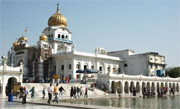
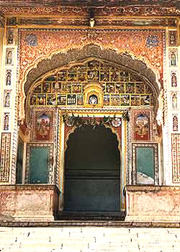
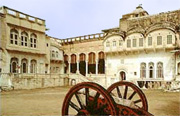
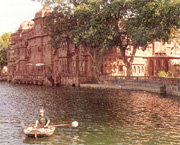
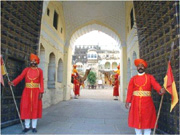
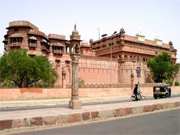
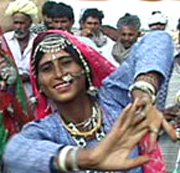
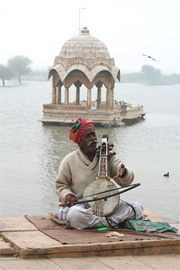
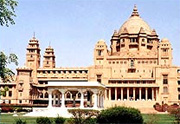
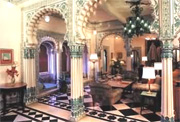
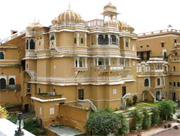
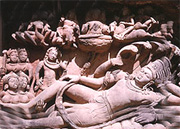

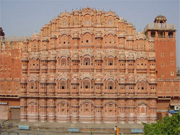
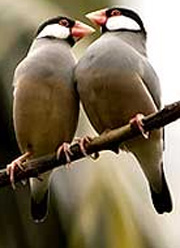
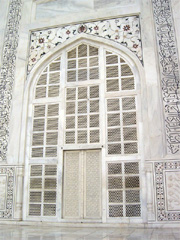 |









